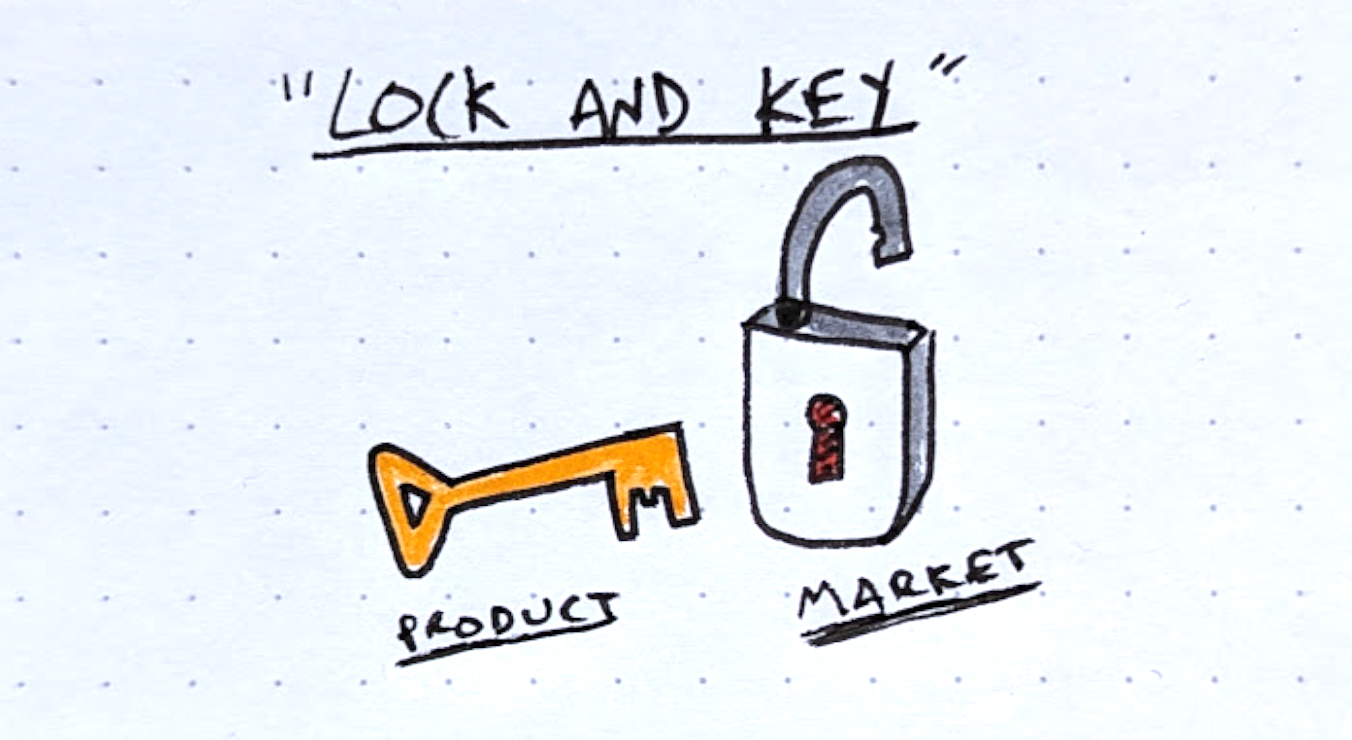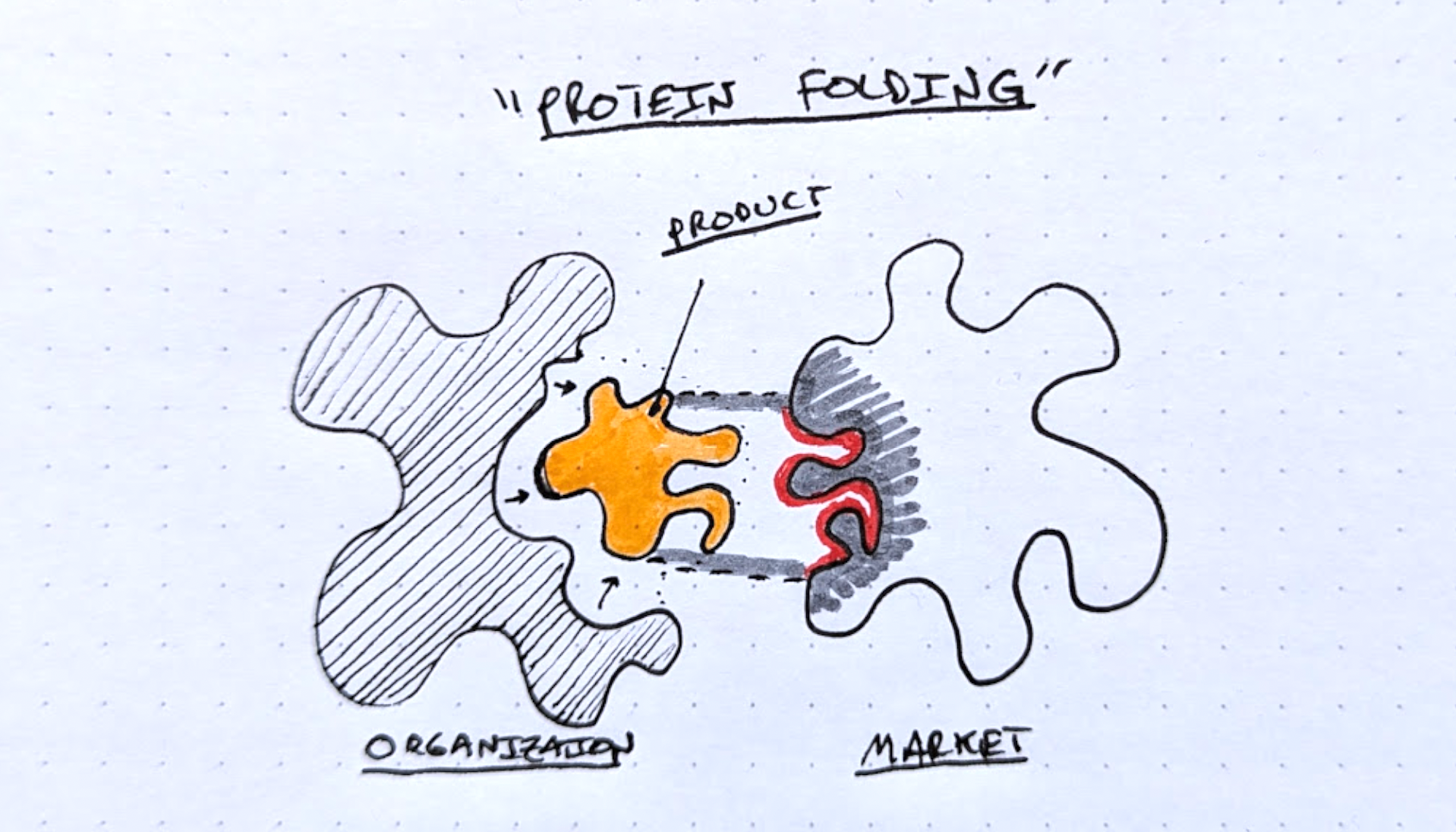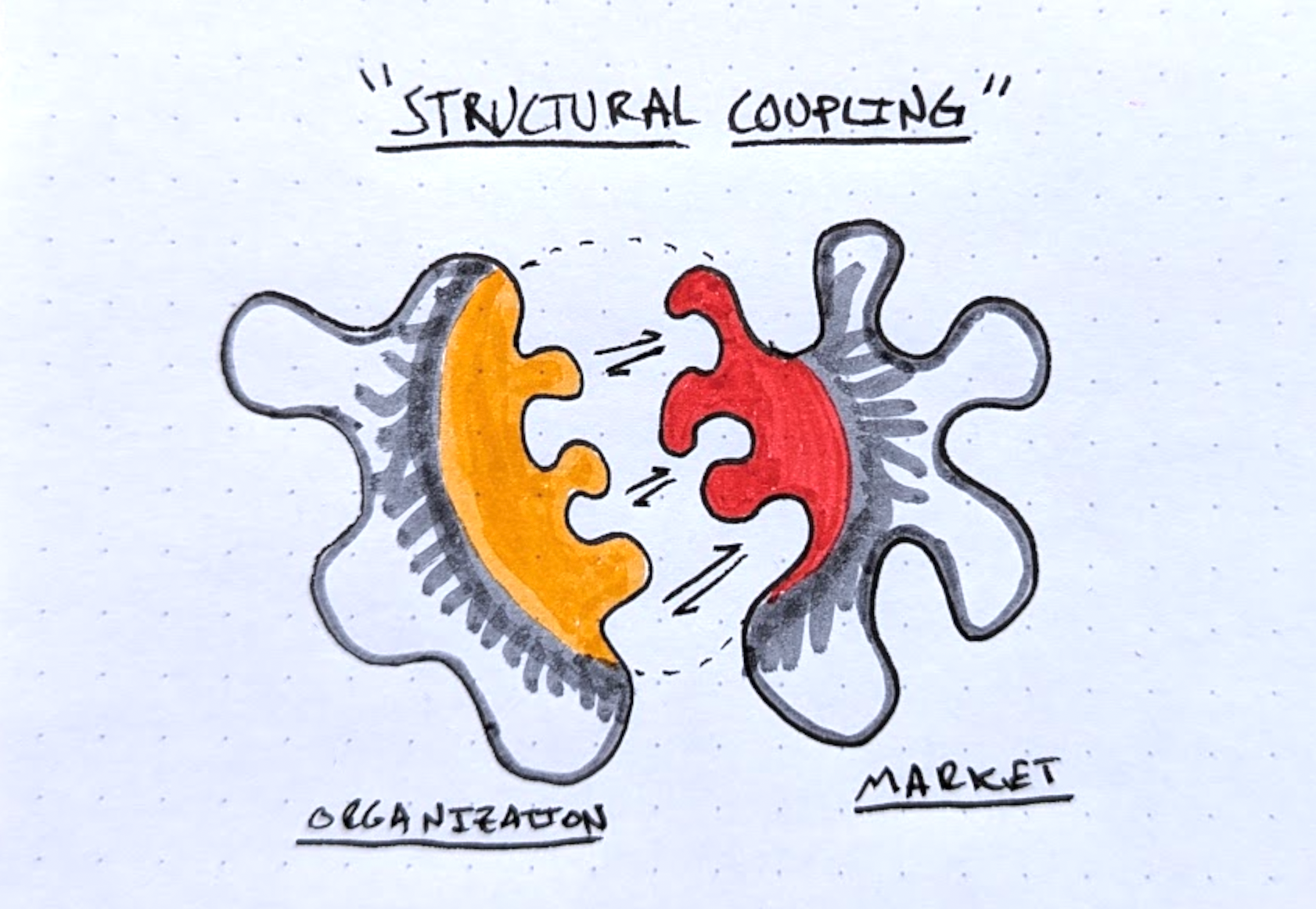Understanding our work in context
We need good hooks for asking, "what are we really doing with our work?" and "what kinds of recurring problem-and-solution patterns do we encounter while doing that?" There's real power in understanding and communicating how-things-work-and-why, plus a necessary satisfaction for the driven and the curious, too.
It all starts with the right frame. I've been searching for a guiding metaphor to pin down what's happening when our organizations express themselves as software services, and what that means for our work.
Today we'll look at three visual metaphors that may fit the bill. I'll offer the third, "structural coupling," as our best opening option.
Metaphor #1 - Lock and Key

Here is a surface-level metaphor for the work our organizations are taking on: it can help explain the need for external research to executive stakeholders and it offers some nice growth/lockpick analogies.
But it doesn't go any further than that. It sees our customers as locks to be picked, it ignores the realities of the organization, and it's probably more harmful and reductive than helpful.
Metaphor #2 - Protein Folding

There is a lot to like in the biological metaphor of our organization a living system that shapes products to fit the contours of the external market. It speaks to a more complex and active relationship with the external market and begins to highlight the importance of the organization itself.
It has just one flaw: in this metaphor, proteins are "released" from the organization into the outside world, without direct feedback loops or internal implications. It's more apt for the past, when we bought our software in boxes off the shelves of local stores (B2C) or had teams come in to set it up on-premise (B2B).
Metaphor #3 - Structural Coupling

With full connectivity and continuous delivery, the information environments (products) that our users and customers navigate are an extension of the organization itself, rather than an artifact released and separated from it.
The idea of structural coupling goes further. Our organization, a living system, is not only reshaping itself to fit its market: once there's a mutual fit, the organization is reshaping its market, even as the market reshapes the organization.
Whatever our functional expertise, our work exists across the external loops and internal cycles that continually adapt and reshape the organization. Our work plays out on the organization's exposed surfaces — products, services, and communications — as well as the internal structures that guide and enable that continual adaptation.
Implications of structural coupling
I first encountered the idea of this mutual co-evolution in Understanding Computers and Cognition:
The sources of perturbation for an organism include other organisms of the same and different kinds. In the interaction between them, each organism undergoes a process of structural coupling due to the perturbations generated by the others. This mutual process can lead to interlocked patterns of behavior that form a consensual domain. — Winograd and Flores, 1986
When we recognize that our work lies in adapting an organization<>environment coupling, we begin to sense the true challenge at hand and its inherent complexity. We also get a feel for the awe-inspiring leverage that large organizations hold as they reshape themselves and the co-evolving behaviors of their environments.
Flowing from this metaphor are some of the ideas that we'll explore in upcoming Loops:
- Enacting new ideas will always, to some degree, change the structure of the organization — be it minds, code, incentives, infrastructure, teams, or strategy
- Different areas and altitudes of the organization move at different speeds and with different attitudes — they must be treated differently
- An organization's existing shape and coupling to the market inevitably creates inertia and resistance to change — it's not insurmountable, but we must see it
- Navigating the machinery and processes inside the organization is just as important as the work to understand external user and strategic contexts
If it feels too abstract, don't worry: we'll walk our way up and down the ladder of abstraction in Loops and Cycles to come.
Podcast appearance on "Insights Unlocked"
Finally, a few weeks ago I joined Andy MacMillan, CEO of UserTesting, to look ahead at the future of research on Insights Unlocked.
We spoke about how it's easier than ever to do research work, and how that doesn't mean we're much better at knowing how to use it. In that vein, I mentioned the need for better integration with product processes, and the power that arises from seeing the larger picture outside our functional scopes.
It's about 20 minutes — feel free to take a listen:

This is Loops and Cycles, a weekly mailing list that explores how our organizations turn ideas into good software. Unsubscribe if you don't like it, discuss with your team if it resonates, and send me your thoughts and questions.


![A Guiding Metaphor [LC01]](/content/images/size/w100/2024/04/3-structural-coupling-2.png)
